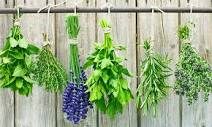 A 2016 systematic review and meta-analysis published in 2015 found strong evidence for the
A 2016 systematic review and meta-analysis published in 2015 found strong evidence for the
treatment of cough using Andrographis paniculata in six random control
studies. Moderate evidence was P. sidoides being superior to placebo was also found in thirty
four random control studies in over 7,000 subjects. (1) Further evidence from systematic
reviews in the literature suggests that alone, or in combination with other herbals, A
paniculata to be an efficacious treatment in uncomplicated acute upper respiratory
tract infections. (2-5)
As recently as 2017 A. paniculata has been again shown to be efficacious, beneficial and safe in
the treatment of acute upper respiratory infections, as well as shortening the duration of
infection in a systematic review and meta-analysis over thirty- three random control trials
including over 7,000 patients. Despite these findings, caution is warranted due to
various inconsistencies within the studies selected. (6)
Up until 100 years ago, natural medicine was the mainstay of remedies for illness, however the
widespread acceptance of chemical drugs, traditional therapies have fallen out of favour, however
in 2015 it was estimated that 80% of people worldwide rely upon herbal medicines for some
aspects of their primary care. (7)
According to figures published by Complementary Medicines of Australia, (8) CAM is estimated to be
used by up to two out of three Australians, and accounts for $3.5 billion in expenditure
every year. It is noteworthy that the annual patient expenditure for CAM exceeds expenditure
on Pharmaceutical Benefits Scheme (PBS) medications by $1.8 billion. (8-10)
In 2018 an online, cross-sectional survey was conducted in Australia, with 2025 participants being
Australian adults over the age of 18 years. The conclusion is that the use of Complementary
Medicine in Australia remained consistently high over the preceding 10 years, despite current evidence and policy making
decisions. It is considered critical that health policy makers and providers
consider the use of CAM in relation to their attempts to provide optimal health care. (11)
“Herbal Medicines
Herbal medicine is always defined as a therapeutic regimen that, rather than consisting
of a single compound that interacts with a single target, is a concerted pharmacological
intervention of several compounds that interact with multiple targets (Wang et al., 2012;
Zhang et al., 2012a,b). From: Serum Pharmacochemistry of Traditional Chinese Medicine, 2017
Lifestyle diseases that require long term pharmaceutical medication raises considerable
concerns over safety, therefore herbal medicines not only have an important role in healthcare,
either acute or chronic. Given the issue of chronicity and comorbidities and long term
side-effects of pharmaceuticals in an aging population, herbal medicines offer efficacy and safety,
with very little documented side-effects with long term use, may be considered a dietary supplement
for disease prevention and can often be safely administered alongside conventional
pharmaceutical medicines by a trained Herbalist. (12)
1. Wagner L, Cramer H, Klose P, Lauche R, Gass F, Dobos G, et al. Herbal Medicine for
Cough: a Systematic Review and Meta-Analysis. Forschende Komplementärmedizin/Research in
Complementary Medicine. 2015;22(6):359-68.
2. Poolsup N, Suthisisang C, Prathanturarug S, Asawamekin A, Chanchareon U.
Andrographis paniculata in the symptomatic treatment of uncomplicated upper respiratory tract
infection: systematic review of randomized controlled trials. Journal of clinical pharmacy and
therapeutics. 2004;29(1):37-45.
3. JT Coon EE. Coon and Ernst andrographis systematic review 2004. 2004.
4. DARE Review 2004. Andrographis paniculata in the treatment of upper respiratory
tract infections.
2004.
5. Saxena RC, Singh R, Kumar P, Yadav SC, Negi MP, Saxena VS, et al. A randomized
double blind placebo controlled clinical evaluation of extract of Andrographis paniculata
(KalmCold) in patients with uncomplicated upper respiratory tract infection. Phytomedicine.
2010;17(3-4):178-85.
6. Hu XY, Wu RH, Logue M, Blondel C, Lai LYW, Stuart B, et al. Andrographis paniculata
(Chuan Xin Lian) for symptomatic relief of acute respiratory tract infections in adults and
children: A systematic review and meta-analysis. PLoS One. 2017;12(8):e0181780.
7. Wu D, Lu J, Ma X, Liu Q, Wang D, Gu Y, et al. Coinfection of Influenza Virus and
Severe Acute
Respiratory Syndrome Coronavirus 2 (SARS-COV-2). Pediatr Infect Dis J. 2020;Online First.
8. 2014 Complementary
Medicines
Industry Survey. 2014.
9. Conrady DMv, Bonney A. Patterns of complementary and alternative medicine use and
health literacy in general practice patients in urban and regional Australia. Australian Family
Physician. 2017;46(5):316-20.
10. Xue CC, Zhang Al Fau – Lin V, Lin V Fau – Da Costa C, Da Costa C Fau – Story DF, Story
DF. Complementary and alternative medicine use in Australia: a national population-based survey.
(1075-5535 (Print)).
11. Steel A, McIntyre E, Harnett J, Foley H, Adams J, Sibbritt D, et al. Complementary
medicine use in the
Australian population: Results of a nationally-representative cross-sectional survey. 2018.
12. N. Chattopadhyay RM, in Reference Module in Biomedical Sciences, 2015. Herbal
Medicines. Science Direct. 2015.




